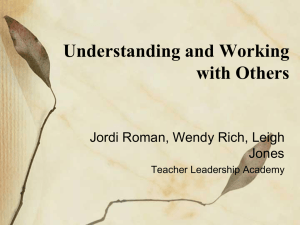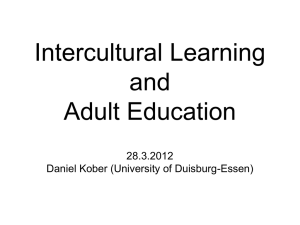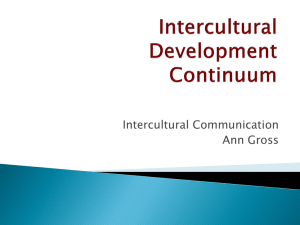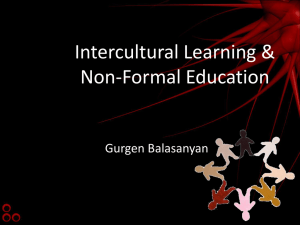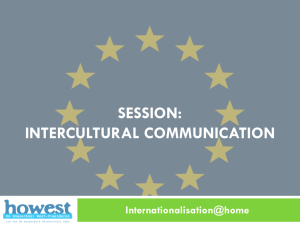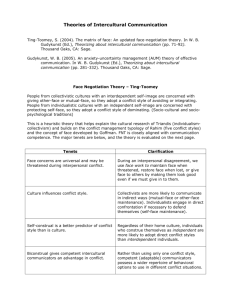How rude was that?
advertisement
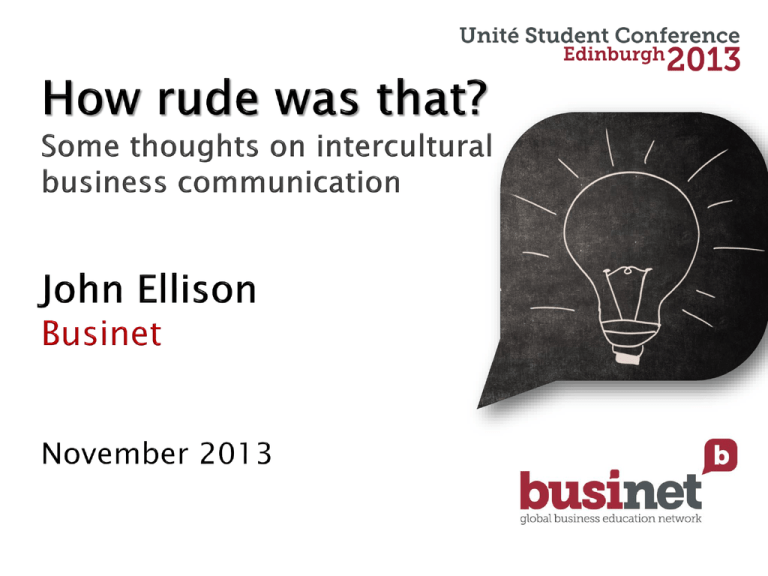
What is intercultural business communication? Why is it important? How do you become an effective intercultural communicator? The manners, traditions and customs of groups. The groups may be national, ethnic/racial, and/or religious. Any group tends to develop its own culture. Consider for example a family, or a business. Cultural behaviours include every kind of activity, from greetings and social etiquette to dress and gender roles. Examples? What about the British? An example might be an Englishman in Scotland delivering a presentation to students mainly from Belgium and Holland. Intercultural business communication? The ability to communicate, negotiate and work effectively with people from other cultures within a business context. Global business village: internationals, multinationals. Workforce mobility: demand and supply, unrestricted movement of labour. Organisations in liberal economies want to hire the best. Business growth commonly linked to new markets which may be culturally diverse. Language skills of the potential workforce facilitates mobility. Others? Poor or non-existent intercultural skills can lead to misunderstanding, upset, resentment, and anger. In a business context this can create poor/low morale leading to underperformance and possibly mistakes. Video: Stereotypes Stereotypes, generalisations, and preconceptions. Where do these come from, and why do they exist? Examples? Germans; Chinese; Moslems; Italians; Indians; Jews; Americans. http://www.youtube.com/watch?v=LQQtoyStMe4 Note especially from the video the role of personality and education in developing intercultural competences. The video is based upon the work of a leading writer and researcher in the field, Sarah Trenholm. The transfer of information between and amongst people. Receiving, interpreting and responding to messages. Communication can be categorised in many ways. Here are just two examples: Verbal and non-verbal communication. Non-verbal communication. Examples. Direct and indirect verbal communication. Direct: true intentions are revealed in the message, and the words, whether written or spoken, are taken at face value. Direct communicators usually appreciate short direct answers. No analysis of the response is required. Indirect: true intentions are hidden, using language such as “possibly” or “maybe” , when the real answer is “I don’t know”, or “I don’t understand”, or “I don’t want to”. Indirect communicators believe it is better to be polite than to say no, or that they don’t understand. They wish to avoid uncomfortable situations, and may be trying to save face (honour, reputation, self esteem). They can view direct communicators as rude. Indirect communication is a common characteristic of Asian cultures. In social relationships the differences between direct and indirect communicators can be frustrating. In business, where time is a valuable commodity, it can create serious conflict. Are there ways of overcoming issues of cultural diversity? Video: Cultural Diversity – tips for communicating with cultural awareness http://www.youtube.com/watch?v=ZDvLk7e2Irc Being observant, for example by mirroring body language Appreciating differences and being adaptable Being patient and tolerant. In short, being emotionally intelligent! If you have not you are very rude, but as I am emotionally intelligent and I prefer indirect communication ignore the rude remark and thank you as well!
